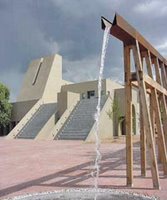 Mikaela says:
Mikaela says:
I know there are valid issues for boycotting the National Hispanic Cultural Center (NHCC). Yes, it sold off its buildings to corporations to get them built. Yes, there's been a recent rash of firings when long-term, valuable employees didn't tow the political line. Yes, its mission as a "National" cultural center is complicated when it receives its meager budget predominantly from the New Mexico legislature. Yes, it has not had the best reputation of working with established local organizations to target, support, and advertise events. Yes, yes, yes.
All of this is very very sad for me, because as a celebrant of culture, there is much to recommend the Center. Last night's event organized by the director of Literary Arts, Carlos Vasquez, was an important example. NHCC is hosting an exhibit of photographs by Rick Nahmias, who worked for years to develop The Migrant Project: Contemporary California Farm Workers. He's an independent photographer who collaborated with legal aid groups and labor groups to document the horrendous and exploitive working conditions for the huge population of both documented and undocumented migrant farm workers in California.
Last night's event organized by the director of Literary Arts, Carlos Vasquez, was an important example. NHCC is hosting an exhibit of photographs by Rick Nahmias, who worked for years to develop The Migrant Project: Contemporary California Farm Workers. He's an independent photographer who collaborated with legal aid groups and labor groups to document the horrendous and exploitive working conditions for the huge population of both documented and undocumented migrant farm workers in California.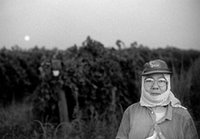 Last night was the opening, which I attended almost by accident, but I am so glad that I did not miss it, as most Albuquerqueans did, since the event was all but stealth. Even with a lack of notice, there were maybe 65-80 people there, hearing from both the photographer and local UNM professor who advocates for farm labor rights.
Last night was the opening, which I attended almost by accident, but I am so glad that I did not miss it, as most Albuquerqueans did, since the event was all but stealth. Even with a lack of notice, there were maybe 65-80 people there, hearing from both the photographer and local UNM professor who advocates for farm labor rights.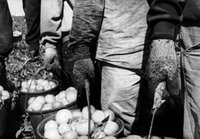 What's valuable about this exhibit for me was the subtlety and immediacy of the images. These are not over-the-top you-must-care-because-this-is-horrifying (which often elicits a turned-off response from those who don't want to see, don't want to know) images. These are take-a-moment-and-look, see-yourself, see-human-beings, see-the-reality images. They are undeniable. Real. Powerful. Effective.
What's valuable about this exhibit for me was the subtlety and immediacy of the images. These are not over-the-top you-must-care-because-this-is-horrifying (which often elicits a turned-off response from those who don't want to see, don't want to know) images. These are take-a-moment-and-look, see-yourself, see-human-beings, see-the-reality images. They are undeniable. Real. Powerful. Effective.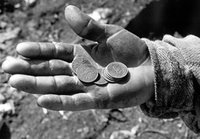 It's a small exhibit, perhaps taking you as little as five minutes and as much as an hour to absorb. I think the impact will last much longer. Take the time. Understand the reality of the lives of the people vital to feeding us. Don't we owe them at least that?
It's a small exhibit, perhaps taking you as little as five minutes and as much as an hour to absorb. I think the impact will last much longer. Take the time. Understand the reality of the lives of the people vital to feeding us. Don't we owe them at least that?
The free exhibit is displayed in the Salón Ortega of the History and Literary Arts building of the National Hispanic Cultural Center. For further information about the exhibit, contact Carlos Vásquez, Director, History and Literary Arts, at the National Hispanic Cultural Center at 505 724-4778.
Thursday, March 30, 2006
Migrant Farm Workers Exhibit at NHCC
Subscribe to:
Comment Feed (RSS)


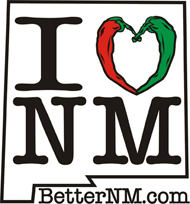


|